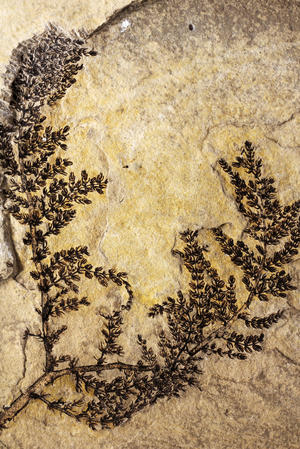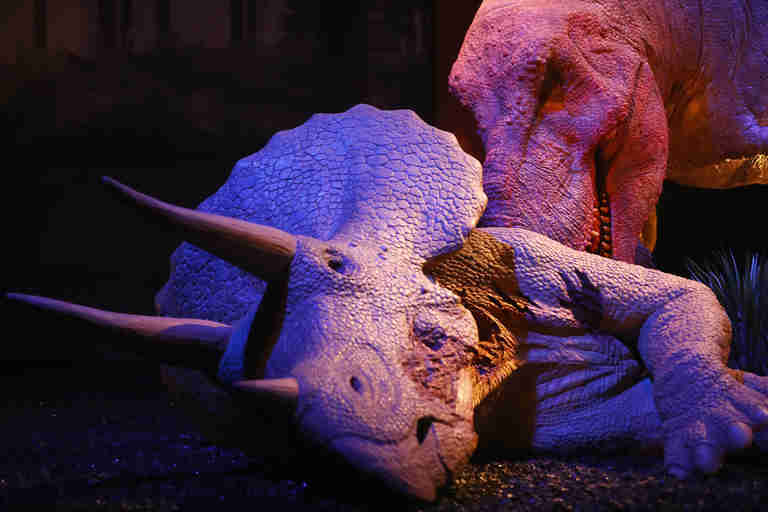 |
| Typical green Tuscany landscape in Val dOrcia with hills, trees, red poppies, and blue, cloudy sky |
The phrase "higher plants" refers to angiosperms, or plants that produce flowers and seeds enclosed within a carpel, which is the female reproductive organ of a flower. They include herbaceous plants, shrubs, grasses, and most trees.
Darwin's "abominable mystery" finally been solved, according to researchers who provide evidence that angiosperms downsized their genomes, which allowed them to decrease their cell sizes to gain a competitive advantage over other plants. The findings are published in the journal PLoS Biology.
"We estimate that over about 50 million years, the minimum size of angiosperm genomes approximately halved," co-author Adam Roddy of Yale University's School of Forestry and Environmental Studies, told Seeker. "This period coincided with decreases in atmospheric carbon dioxide uptake, and because smaller genomes and cells facilitate better carbon dioxide update, selection for small cells was particularly strong."
For their study, Roddy and co-author Kevin Simonin of San Francisco State University's department of biology compiled data for genome size, cell size, stomatal density (the number of stomata, or microscopic pores in leaves), and other information for nearly 400 species of not only angiosperms, but also ferns and gymnosperms. The latter are plants that have seeds unprotected by an ovary or fruit. They include the conifers, cycads, and ginkgo.
The researchers found that genome downsizing began about 140 million years ago. The world's oldest known flowering plant, Montsechia vidalii, dates to 10 million years later in the fossil record. Flowers likely emerged much earlier than this specimen, however. This overall period, when dinosaurs were still flourishing, corresponds to the spread of angiosperms around the globe.
 |
| A large intact specimen of the fossil Montsechia vidalii |
"However," Roddy said, "there is a strong link between genome size and cell size because the minimum size of a cell is defined by the size of the nucleus, where the genome resides. So, genome size acts as a hard, lower boundary on the minimum size of the cells."
The same phenomenon occurs in animals and all other eukaryotes, prior research suggests. The human genome contains about 3 billion chemical units of DNA, or base pairs. In contrast, the seemingly simple small creature Amoeba dubia has 670 billion base pairs, according to the organization Genome News Network.
Numerous factors aside from genome size can affect cell size, though, such as environmental conditions and biological factors. Having small cells is not even always beneficial because plenty of functions may require large cells.
"For example," Roddy said, "desert plants frequently store water inside their cells to tolerate prolonged drought conditions, and this means they have large cells."
Nevertheless, smaller genomes — and therefore smaller cells — have proven to be very beneficial to flowering plants. Their emergence irrevocably altered global climate and all life on Earth.
The scientists explained that because of their high metabolic rates, flowering plants promote faster rates of cycling of water, carbon, and nutrients. Many angiosperms are also annual plants, which rely on short life cycles and fast physiological rates. Flowering plants may help to maintain wetter, less seasonal tropical forests, due to their higher transpiration rates.
"Furthermore, the angiosperms are the basis of our global food supply," Roddy said. "Humanity would not survive without them."
 |
| A mechanical dinosaur display at the Natural History Museum of Leiden |
"The ferns and conifers that remain live predominantly in marginal habitats that have low productivity," Roddy said, explaining that "productivity" refers to processes like photosynthesis and growth.
"In these habitats," he continued, "survival may be due less to having a competitive edge than to being persistent and able to survive long periods of stress."
For example, boreal forests that have long, cold winters are dominated by conifers. Ferns, on the other hand, often live in very dark forest understories, or in dry rock crevices.
"It's not to say that there aren't also angiosperms that inhabit similar habitats, but rather that these marginalized habitats are not driven by intense competition," Roddy said.
Simonin added that flowering plants today are not the dominant player in every terrestrial ecosystem, yet in environments that can support high rates of productivity, "angiosperms are well suited to take advantage of this and thus have a competitive edge over the other major groups of land plants."
In the future, the findings related to genome and cell sizes could benefit crop breeding programs, leading to plants with even more enhanced potential for growth and water-use efficiency.
 |
| Georgia aster (Symphyotrichum georgianum), a flowering plant that has been in decline for decades due to human-caused threats, such as habitat loss |
"Most whole plant genomes that have been sequenced have been done, not surprisingly, on species with relatively small genomes because this smaller size makes it easier," Simonin said. "However, to really understand what is taking place during these genome rearrangements we also need to sequence the genomes of species with relatively large genomes."
The researchers also want to determine how genome size influences the ability of plants to respond to environmental changes associated with global climate change.
Angiosperms clearly survived the major extinction event that wiped out non-avian dinosaurs and numerous other animals around 66 million years ago, but some of the most endangered plants now are flowers. They include the Western prairie fringed orchid, rafflesia flower, Georgia aster, Howell's spectacular thelypody, and Ouachita mountain goldenrod.
Read more at Seeker
No comments:
Post a Comment